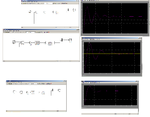jonnybgood
Full Member level 4
What are the main differences between PID controller and lead/lag compensators? When and were are they implemented?
I am working on position control of a DC motor connected to a pulley and getting position feedback by means of a potentiometer. The motor is given a square wave for obtaining a step response. I deduced the transfer function and designed a PID using the Manual Method and ZN. Now I need to design a phase lead and phase lag compensator. thanks
I am working on position control of a DC motor connected to a pulley and getting position feedback by means of a potentiometer. The motor is given a square wave for obtaining a step response. I deduced the transfer function and designed a PID using the Manual Method and ZN. Now I need to design a phase lead and phase lag compensator. thanks
